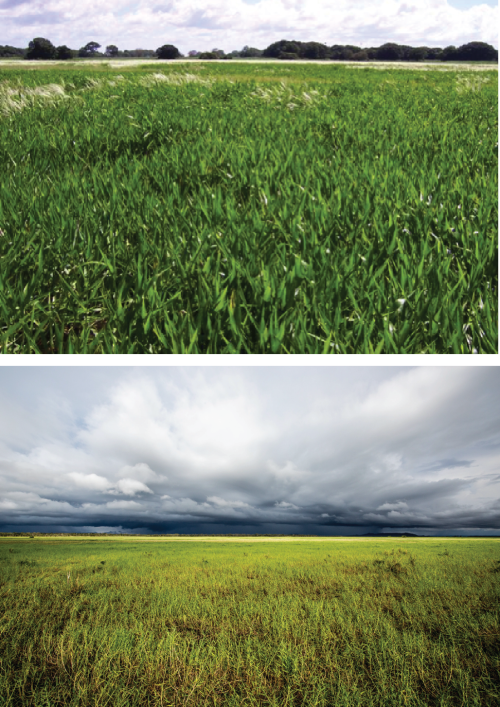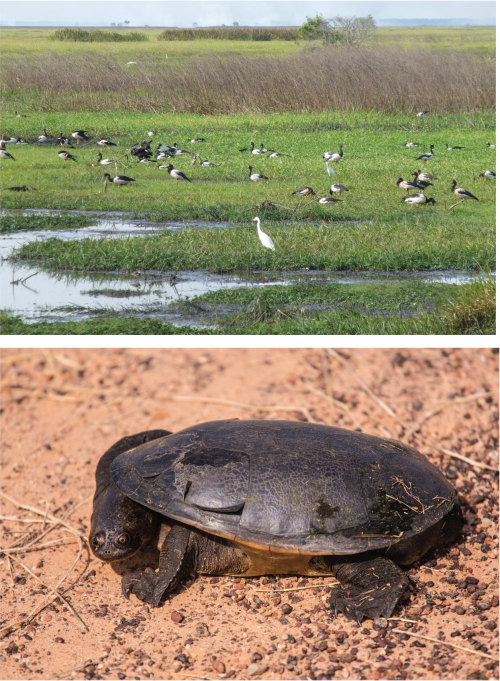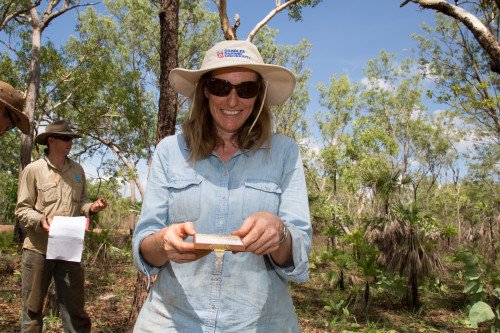Invasive grasses pose a threat to natural and cultural resources in Kakadu National Park
Heath Kelsey ·As part of our synthesis of research findings related to National Environment Research Programme (NERP) work on Kakadu National Park floodplains, I am interviewing scientists to begin distilling the key messages for the synthesis story. These researchers are contributing to the developing picture of the connections between the floodplains, water movement, and important natural and cultural resources.
Associate Professor Samantha Setterfield has been studying the establishment and spread of the invasive grasses para grass (Urochloa mutica) and Olive hymenachne (Hymenachne amplexicaulis) in Kakadu National Park, and the implications they have to park management and cultural resources.

Findings suggest that the spread of these grasses poses a real threat to natural and cultural resources in the park. Specifically, important bush tucker species like Magpie Geese (Anseranas semipalmata) and long neck turtles (Chelodina rugosa), may be affected, both by restricting access of humans to their habitat, and reducing quality of the habitat available.

Additionally, para grass can increase fuel loads as a result of its fast and dense growth, and its tendency to create monoculture areas. Late dry season fires, when the fuel loads are high, can create fires that are hot enough to kill paperbark trees on the floodplains and turtles that would otherwise be buried in the mud. Both grasses can restrict nesting and foraging habitat for magpie geese and available open water habitat for fish. The dense vegetation can also add to the biological oxygen demand in floodplain waters, especially late in the wet season, causing oxygen depletion in the water, creating another problem for fish.
In addition to understanding the scope and spread of these grasses, it is important to understand the available management options and effectiveness under different scenarios. Key components of the research also include the development of models that will predict how these weeds will spread. Integrating these maps with traditional knowledge of bush tucker harvesting areas can help prioritize areas for intense management effort, and suggest areas where management will be most effective.

An important linkage also exists to other NERP research components evaluating fish movement and energy transfer. Research suggests that emergent vertical and dense grasses including olive hymenachne and para grass are poorer substrate for the algae that fuels much of the food web than are many of the native plants. This research will be discussed in future blogs. Although future sea level rise may also affect the spread of the these grasses, it is expected that management of invasive grasses will require a faster response than the effects of sea level rise and salt water intrusion to have an immediate impact.
About the author
Heath Kelsey

Heath Kelsey has been with IAN since 2009, as a Science Integrator, Program Manager, and as Director since 2019. His work focuses on helping communities become more engaged in socio-environmental decision making. He has over 15-years of experience in stakeholder engagement, environmental and public health assessment, indicator development, and science communication. He has led numerous ecosystem health and socio-environmental health report card projects globally, in Australia, India, the South Pacific, Africa, and throughout the US. Dr. Kelsey received his MSPH (2000) and PhD (2006) from The University of South Carolina Arnold School of Public Health. He is a graduate of St Mary’s College of Maryland (1988), and was a Peace Corps Volunteer in Papua New Guinea from 1995-1998.